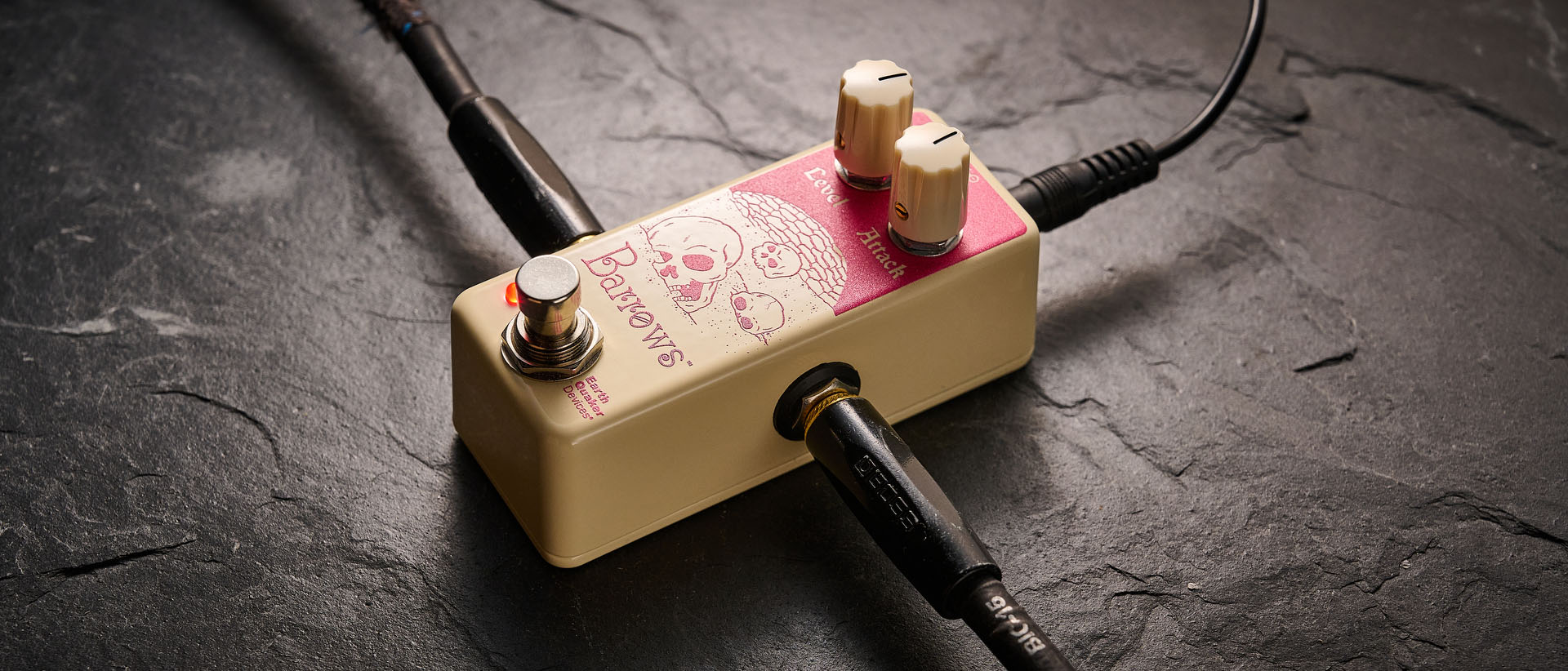MusicRadar Verdict
At this price – at this size – it’s a no-brainer. The Barrows could be the impulse purchase that rewilds your guitar sound, or maybe it’s the Tone Bender repro that you’ve been waiting for since forever, the compact fuzz that can play nice as an amp-style drive/distortion, or nasty. A feral supernova awaits if you dime those dials.
Pros
- +
It sounds gnarly, timeless, and cleans up nicely.
- +
Works well with other pedals.
- +
Super compact form factor and simple two-knob controls.
- +
A fair price.
Cons
- -
Some players might want a fuzz with a tone knob or more controls but that would complicate things.
MusicRadar's got your back
What is it?
The Barrows Fuzz Attacker is a EarthQuaker Devices’ 21st-century take on the the Tone Bender MkII, the classic early fuzz pedal that played a fundamental role in reshaping electric guitar tone in the late ‘60s.
Some might not have had the pleasure of hearing an original unit in the flesh but most of us will surely have heard one on record. Jimmy Page was an early adopter, deploying a Tone Bender with the Yardbirds then Led Zeppelin.
Archive pics of Page tracking guitar for Joe Cocker’s 1969 album, With a Little Help from My Friends, show him with a Tone Bender on the floor. Led Zeppelin’s incendiary debut was lit up with one.
Page’s fellow Yardbird alumnus Jeff Beck was another who made full use of the Tone Bender’s capacity for grit and heat, and a fuzz sound that unleashed the electric guitar’s latent animalism.
The Tone Bender was the UK’s first fuzz pedal and it came out of Macari’s guitar store on London’s Denmark Street. Joe and Larry Macari teamed up with electronics whizz Gary Hurst, created the Sola Sound brand, and inspired by Vick Flick’s modified Maestro FZ-1, they came up with the Tone Bender.
There have been a few Tone Benders over the years. Some of the very earliest MkI units shipped in wooden enclosures. MkI had a three transistor design.

The transitional Mk1.5 featured a two-transistor circuit that would be the inspiration for the Dallas-Abirter Fuzz Face. Released in 1966, MkII reverted back to a trio of germanium transistors, but with a crucial twist; the third transistor acts as an extra gain stage at the front-end of the circuit. The goal was more sustain.
Want all the hottest music and gear news, reviews, deals, features and more, direct to your inbox? Sign up here.
MkIII added a tone control. MkIV revised the EQ range. All have their charms. The Mk1.5 gets associated with Mick Ronson and David Bowie. The MkIII and MkIV variants found favour in players who valued that tone controls. But many players will argue that the Tone Bender MkII Professional was the best of them.
What I wanted was just a really good, classic germanium fuzz sound... trying to stay true to the MkII tone that people are familiar with
Jamie Stillman, EarthQuaker Devices
EarthQuaker Devices’ founder and president Jamie Stillman is one of them, and speaking to MusicRadar [a demo video you can watch below], he says he wasn’t of a mind to change the MkII sound wholesale. He just wanted it to be more consistent and play better with other pedals.
“As far as my takes on vintage petals [go], this is probably the most by the books take I’ve done,” he says. “What I wanted was just a really good, classic germanium fuzz sound. We had a large batch of really reliable germanium transistors, so I designed the circuit around those, trying to stay true to the MkII tone that people are familiar with… I did a phase correction of the output and buffered it so that it would play nice with pedals down the line.”
In other words, it’s a Tone Bender MkII Professional that’s designed for the age of pedalboard abundance. And, what’s more, it’s tiny.
MusicRadar video demo with Jamie Stillman
Specs
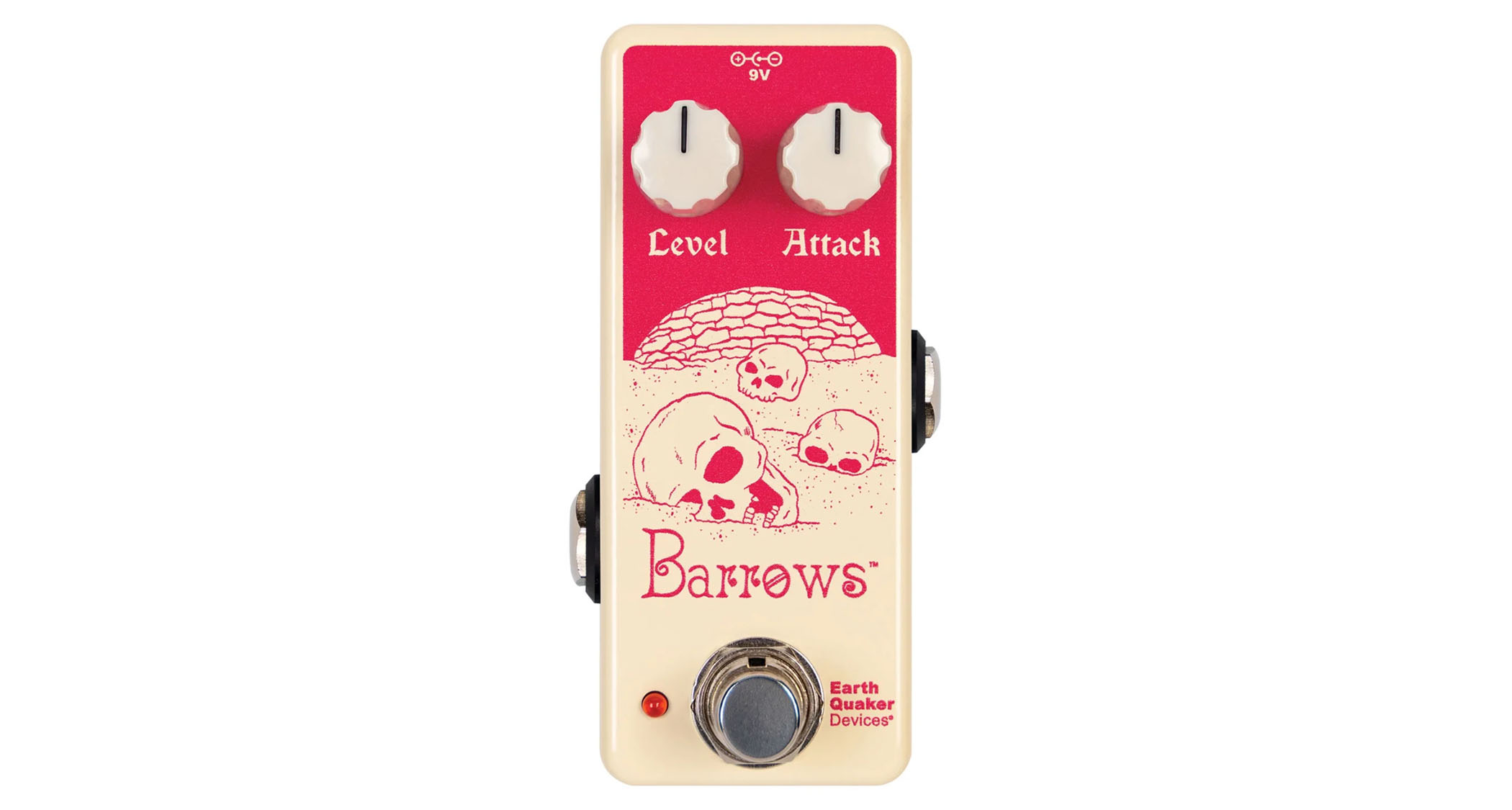
- Launch price: $129/£139/€159
- Type: Fuzz pedal
- Controls: Level, Attack
- Features: Tone Bender MKII-style circuit with three germanium transistors
- Connectivity: 2x 1/4" I/O, center negative power supply input
- Bypass: True
- Power: 9VDC, 10mA
- Dimensions: 95 x 51 x 44 mm (with knobs)
- Weight: 0.355lbs / 0.161kg
- Contact: EarthQuaker Devices
Build quality
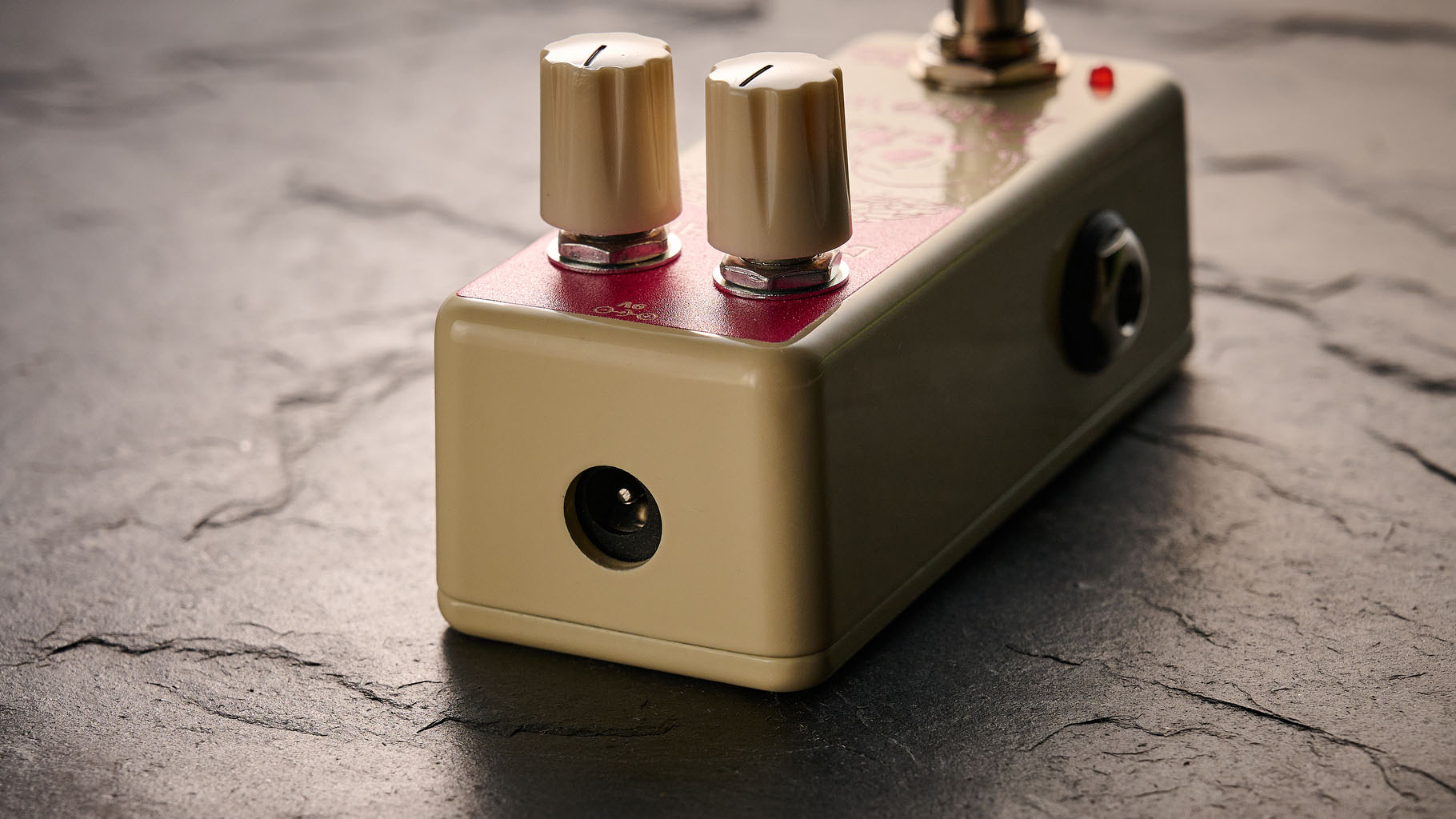
Build quality rating: ★★★★★
The original Tone Benders were many things but they were not small. By today’s standards, certainly for a fuzz or overdrive pedal, they were huge, with a chassis of similar proportions to a wah pedal.
But this was a very different era. Pre-pedalboard. The pedal had to stand on its own onstage, and it had to withstand abuse, the rigours of the road and all that jazz. This and a wah pretty much was your pedalboard while the tape echo would sit up back with your amps.
That original design is still as cool today as it was back then, and that – plus the exacting circuit design – is why Macari’s/Sola Sound is still making them, often with a waiting list, and can charge a whopping £879 (approx $1169). But looking at my maxed-out Pedaltrain ‘board, I’m grateful that Stillman found a way to shrink this thing down to a mini-pedal that fits into the palm of your hand.
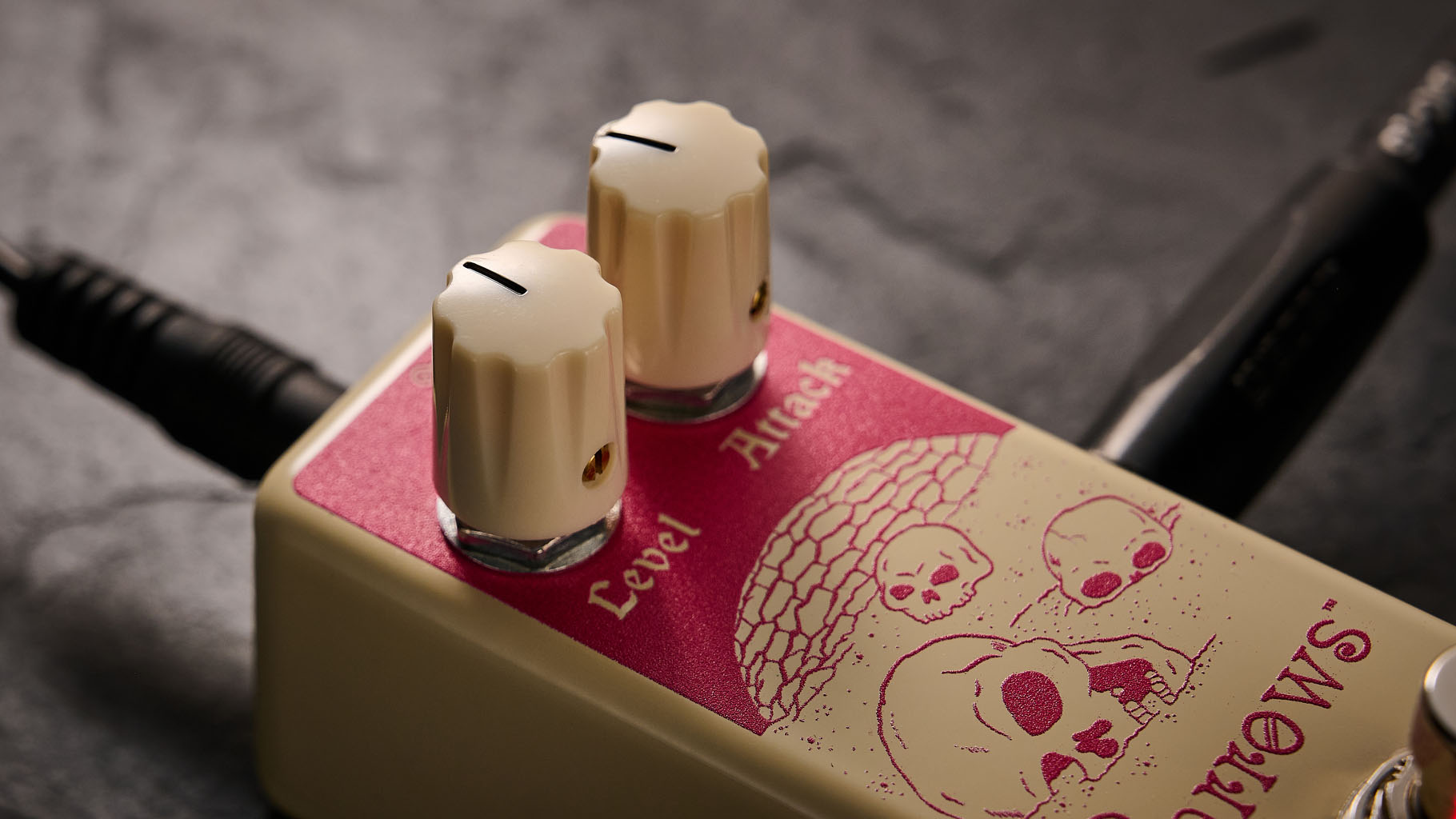
Under the hood, Stillman has integrated the onboard buffer into the actual circuit itself, so that the Barrows is still a true bypass pedal, and when you turn it off, the signal from your electric guitar passes straight on through.
As with all EQD pedals, Barrows is made in Akron, OH, and comes with a limited lifetime warranty, and artist Dave Neeson might have a smaller canvas than usual to work with but he gives it that brand identity with three skulls representing the three germanium transistors, all sinking into the sand. The sands of time. This is a pedal designed to replicate the tones of yesteryear – and it’s built to outlast them.
Usability
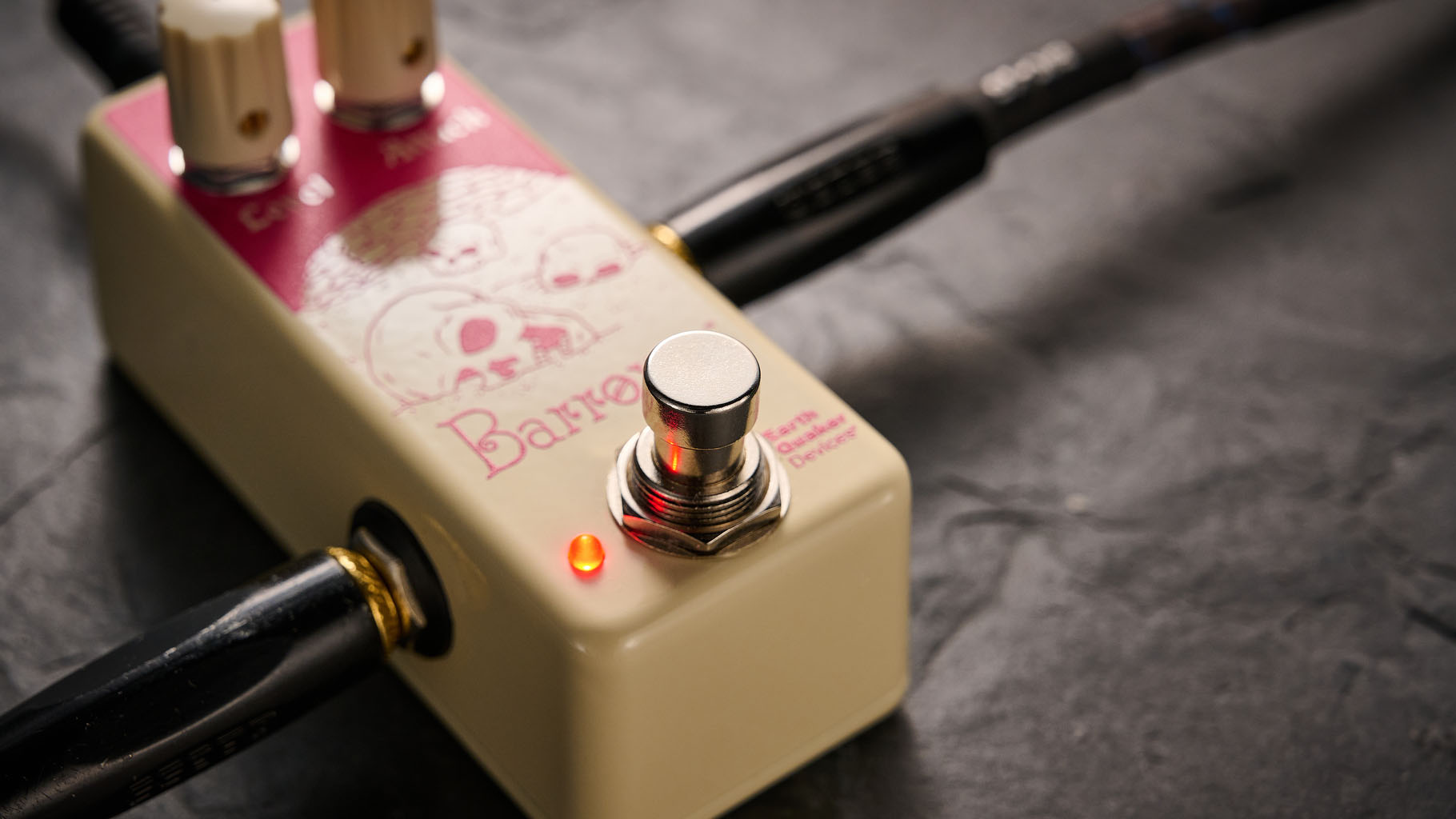
Usability rating: ★★★★½
This is a two-knob fuzz pedal with controls for Level and Attack. Level controls the overall output of the pedal while Attack controls the amount of fuzz/gain is in the signal, and Barrows is designed to do a job at all points of the Attack control, from zero to maxed-out.
You will not need a manual to operate it. With a pedal this small there is no room for a battery, so you will need 9V DC from a pedalboard power supply providing a minimum of 10mA.
When we’re talking usability about a simple two-knob fuzz, it’s less about talking about the two dials that are on the pedal and more about what it might be missing.
Some players might want a MkIII/MkIV type deal, where you have a tone knob for fine-tuning your sound.
It’s a plug-in-and-play pedal with everything you need from those two dials. The guitar is complicated enough. Why complicate it?
Others might prefer a more modernised take on the pedal entirely, like what Boss did when teaming up with Sola Sound for its Waza Craft TB-2W limited edition reissue, a clone of the Tone Bender Professional MkII serial number 500, which was giving you that old-school sound but with a three-way voltage switch and switchable bypass, or the next-gen Tone Bender-alikes such as Robert Keeley’s Fuzz Bender.
But plug this in and you don’t miss what you don’t have. It’s a plug-in-and-play pedal with – and we’ll get to the sounds in two seconds – everything you need from those two dials. Playing the guitar is complicated enough. Why complicate it further?
Sounds
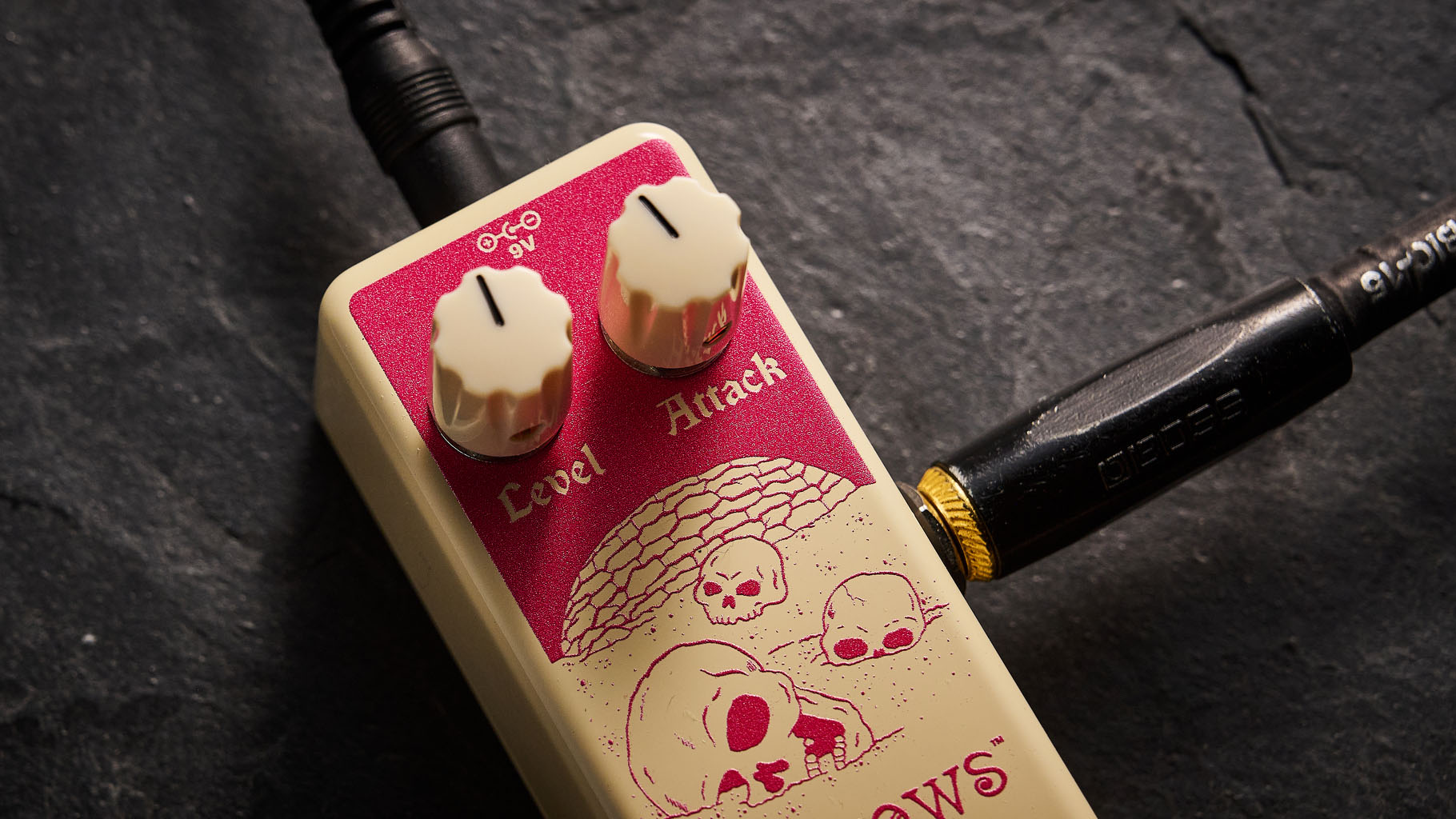
Sounds rating: ★★★★★
It is oftentimes the simplest pedal designs that are the most versatile. The key to versatility is how many useable tones we can get out of a pedal, and how easily we can dial them in. And this little fuzzbox has the capacity to surprise. To shock even. There are some fuzzes that give you that polite warm fizz, musically warm, pleasant, therapeutic harmonic overtones. This is not that. No.
With Level and Attack at noon, stepping on it was like being administered smelling salts. Boom. We are awake now. What was hitherto a ‘50s style Telecaster into a Blackstar tube amp with spanky clean twang was now a sinewy rock ’n’ roll tone, totally wired, accentuating the vinegary treble. Pulling the Attack back in search of mercy was an interesting experience, because so long as that Level is above noon you’re hitting the front end of your amp.
This is billed as a fuzz pedal. It is a fuzz. But run Attack at zero and it’s an aggressive boost, or Attack around nine o’clock and it’s this sparky little overdrive, like an amp with the presence dial forward. More extreme settings yield some of the most exciting results. Maxing it out gives you a sound that laces your power chords with venom.
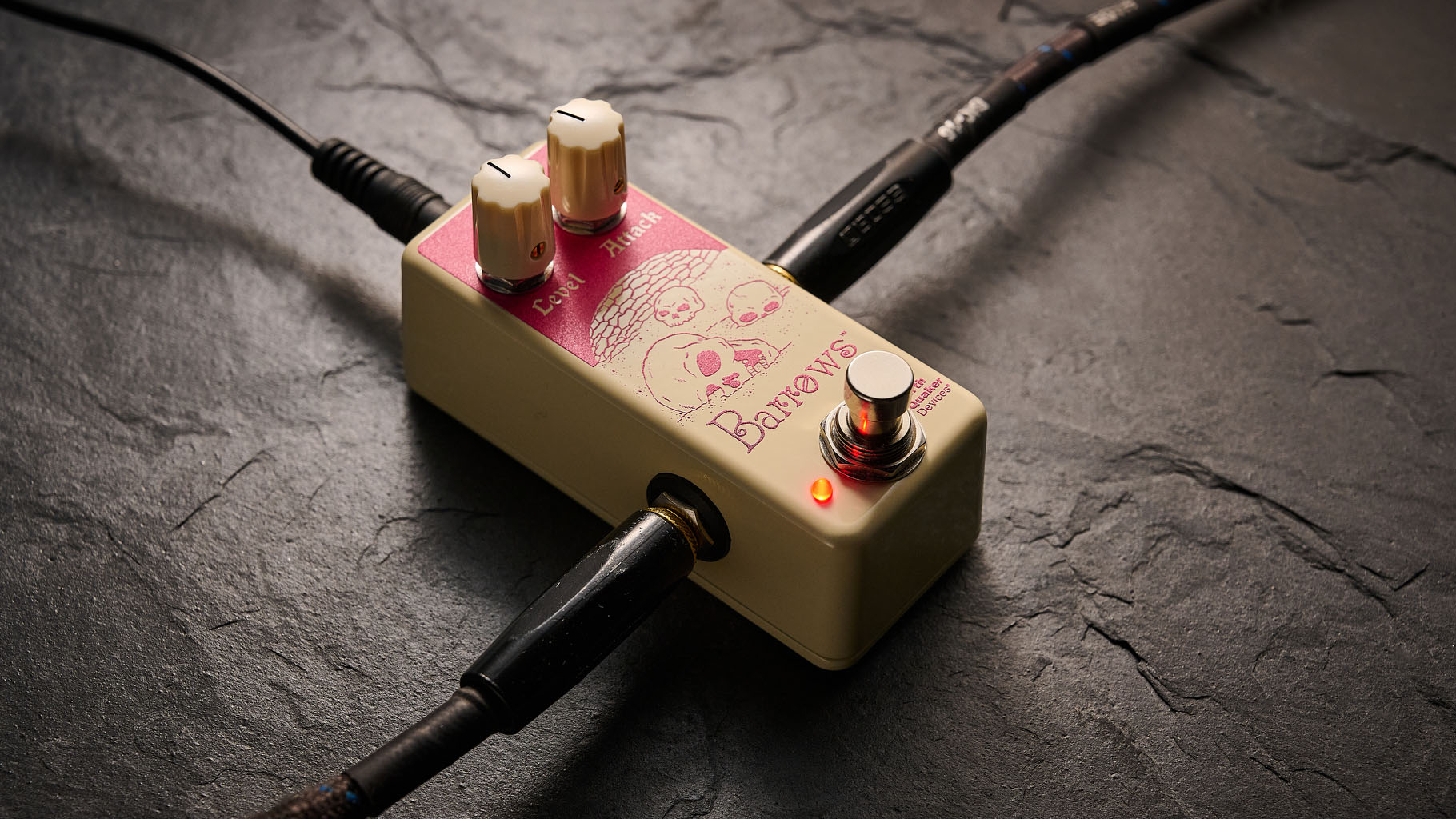
With humbuckers, it can really lean into that stoner-doom Cro-Magnon boogie, particularly if you crank the drive on your amp and tune down. Throughout, there’s a good degree of detail, note separation. That’s where the aggression pays off. No wonder Page got a kick out of this sound in 1969.
More often than not I found myself with both knobs dimed then rolling back the volume on my guitar. That can take some of the edge off it, and this is very much by design.
One thing that was really important to me during the development of this pedal was that it had really good clean-up with the volume control
Jamie Stillman, EarthQuaker Devices
“The fuzz control on this is useful for its whole range, it goes from fuzzy to really fuzzy and it has plenty of output on tap,” explains Stillman. “One thing that was really important to me during the development of this pedal was that it had really good clean-up with the volume control. I think that’s very important in a classic fuzz tone. It’s also one of my favourite sounds, using the neck pickup and slightly rolling the volume back. It gives you a really chimey, percussive overdriven tone, and I think you can do that very well with the Barrows.”
It would be rude not to run an Echoplex tape echo emulation in the signal (alas, we were all out of violin bows for this review… Maybe next time) to go full Jimmy Page, and to run that fuzz-juiced sustain into garbled repeats and sound enormous. This is a pedal that made its bones as the big beasts of rock took to the stage but its tone is just as relevant today. The sounds you get from this are classic, and the classics is that they never go out of style. Stillman says Barrows was designed to complement whatever you throw at it.
“One other thing that I think is really cool about Barrows is that it works really well with all different types of pickups and you get a different dynamic response,” he says. “It even works well with bass. It works well with low-tuning guitars. You’re using humbuckers and they have a little bit more output, you get a really nice kind of overdriven classic amp sound.”
Those scraggly amp-esque sounds turn what is a competent if mainstream-sounding Blackstar into something that sounds like some restored tube-driven curio from ’62 that you bought from a store in downtown Detroit, like maybe the amp needs serviced but you're scared to put it in the shop lest it kill the magic. Those kinds of sounds are precious, because they’re fun, because they’re dangerous, and because you can’t play rock ’n’ roll without danger.
Verdict

It’s going to hit whatever’s in front of it hard
The Barrows Fuzz Attacker is a little dynamo, a pocket-sized rocket, a pedal that absolutely has that vintage Tone Bender mojo pulsing through its electric veins but with the sort of fail-safe modern circuitry that could make it a more practical proposition for large pedalboards and complex signal chains.
It’s going to hit whatever’s in front of it hard. The amount of gain under that Level control is its secret sauce – now, we’re not going to call a Tone Bender MkII clone an always-on tone sweetener… But, hey, it could be. You do you!
And if you are the kind of player who's predisposed to ‘getting the Led out’ this could be a very hard-working addition to your 'board and then some.
MusicRadar verdict: At this price – at this size – it’s a no-brainer. The Barrows could be the impulse purchase that rewilds your guitar sound, or maybe it’s the Tone Bender repro that you’ve been waiting for since forever, the compact fuzz that can play nice as an amp-style drive/distortion, or nasty. A feral supernova awaits if you dime those dials.
Test | Results | Score |
|---|---|---|
Build quality | Typically tip-top EQD built, made in the USA, sensible upgrades to a classic design and tiny. | ★★★★★ |
Usability | Two knobs, plenty of range on both of them, easy to find a spot on your 'board for this. Tone control? Pfft! Where we're going, we don't need no tone controls. | ★★★★½ |
Sounds | Hot, crunchy, fuzzy, with gain that breathes like an overdriven amp and a fuzz that can work with all kinds of pickups and for many different styles. | ★★★★★ |
Overall | Easy to use, impossible not to like. There are lots of Bender-MkIII-alikes on the market but a straight-up MkII replica with modern upgrades and fair price makes perfect sense. | ★★★★★ |
Also try
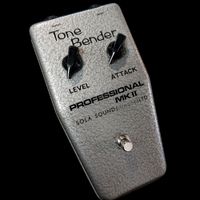
Sola sound Professional MkII Tone Bender - $1,158 approx | £879 | €1,009 approx
The original is still in production, built by pedal guru David Main, and uses original Mullard OC78D and OC42 transistors in its circuit. Not cheap, but there's often a waiting list, so there's plenty of demand. And it'll no doubt hold its value.
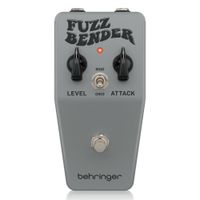
Behringer Fuzz Bender - $75 | £54 | €59
You won't get cheaper than this on-the-nose replica from Behringer. It has the chicken-head knobs, the Level and Attack knob control surface, and switchable modes, the second with more output and body in the mids.

Keeley Electronics Fuzz Bender - $149 | £159 | €169
If the previous two options are like-for-like, albeit from opposite ends of the price range, this is a curve ball, a Bender with silicon/germanium architecture under the hood, a bias knob, a gate knob plus a tone control. It takes the Tone Bender thing and runs with it.
Hands-on videos
EarthQuaker Devices
Sweetwater
GuitarGuitar
Jonathan Horsley has been writing about guitars and guitar culture since 2005, playing them since 1990, and regularly contributes to MusicRadar, Total Guitar and Guitar World. He uses Jazz III nylon picks, 10s during the week, 9s at the weekend, and shamefully still struggles with rhythm figure one of Van Halen’s Panama.
You must confirm your public display name before commenting
Please logout and then login again, you will then be prompted to enter your display name.
